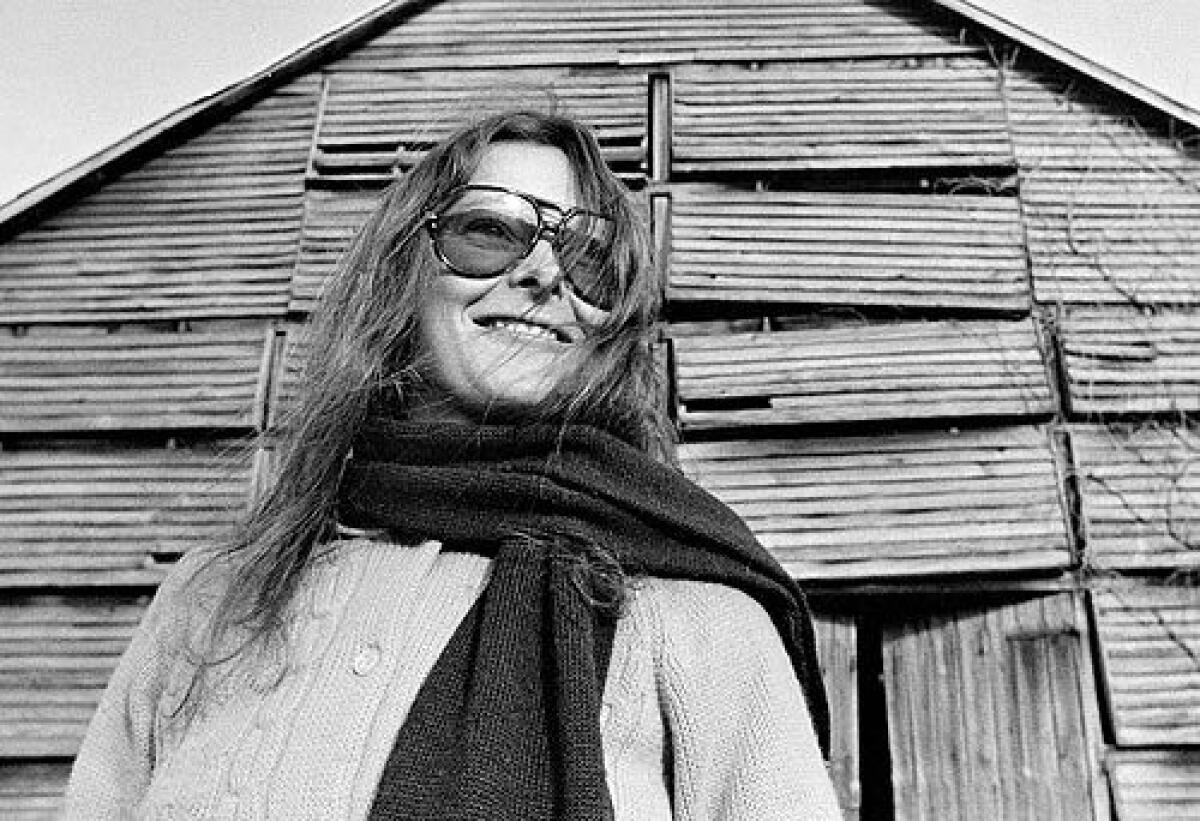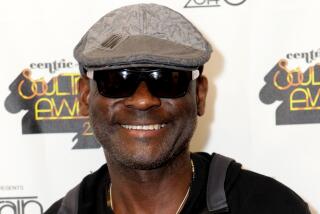A passion for art, a perilous pursuit

- Share via
First of three parts
‘I’m being arrested.”
Roxanna Brown, a renowned expert in Southeast Asian ceramics, was whispering into the hotel telephone.
Downstairs in the lobby, her host, University of Washington professor Bill Lavely, didn’t know what to do. He had flown Brown, a 62-year-old museum director, in from Bangkok to give a lecture at an academic conference in Seattle.
Lavely paced the lobby for 10 minutes before going up to Brown’s room and knocking tentatively on her door. A few minutes later, she emerged, flanked by four federal agents.
She walked stiffly with a cane, limping because of a prosthetic right leg. She looked haggard and frail, Lavely thought. She’d obviously been crying.
“I wish I could explain,” Brown stammered as she was led to the elevator that afternoon in May. “It’s about that thing in Los Angeles. I made a mistake. . . . I faxed my signature.”
Recalling the episode two months later, Lavely said he’d had no idea what she was talking about. As Brown was ushered into the elevator, he asked if there was anything he could do.
“I guess not,” Brown replied. “Well, maybe there is. . . .”
Before she could finish, the elevator doors closed.
It was the last time any of Brown’s colleagues would see her alive.
Art world stunned
The arrest of Roxanna Brown, and her subsequent death in prison, shocked the world of ancient art, where she had come to be seen as one of the world’s foremost authorities on Thai ceramics.
To those who knew her, it made no sense that she should be accused, much less jailed, in an international smuggling investigation that had led to raids of respected museums in Southern California and beyond. Her life had been dedicated to studying and protecting the treasures of long-gone Southeast Asian cultures.
Even as a young girl growing up on a chicken farm in Illinois, she once told her older brother Fred, “I feel like I must have lived in Asia in another lifetime.”
At Columbia University, she studied journalism but was fascinated by a class in Asian art. Virtually nothing was known about Southeast Asian ceramics. Brown thought her degree might help get her overseas to look at kiln sites.
After graduating in 1968, Brown rode her motorcycle from New York to Chicago, then hitched rides with motorcycle gangs to California. There she boarded a plane for Australia, bound for Southeast Asia, determined to follow her childhood intuition.
By December, the 22-year-old Brown was freelancing in Vietnam, one of the youngest credentialed reporters of the war. It was her first visit to Asia, but she felt as though she were home.
Most other journalists lived in Saigon apartments. Brown moved in with a Vietnamese family in a humble neighborhood. They taught her the language and local customs, and she contributed money when she could. It became a lifelong friendship.
Attractive and extremely bright, Brown fell in with a group of journalists now famous for covering the war. She briefly dated Pulitzer Prize-winning photographer David Hume Kennerly, was friends with actor-photojournalist Sean Flynn (son of Errol) and hung out with correspondents Peter Arnett and David Halberstam, her brother said.
“I reestablished my love for motorcycling after borrowing her 100-cc bike,” said Ted Koppel in a recent interview.
In March 1969, when the U.S. began a secret bombing campaign in Cambodia, Brown was part of the gaggle of young freelancers who hung around the Hotel Le Royal in Phnom Penh in the evenings, looking for work, recalled Koppel, then a 29-year-old war correspondent for ABC News.
But from the start, covering the war was a way for Brown to fund her true passion: sifting through pottery shards at the ancient kiln sites that dotted the Vietnamese countryside. She’d work a few days to file a story, then hop on her motorcycle and drive across the war-torn region looking for remnants of its ancient ceramics trade.
“She had a lot more guts than I did,” Kennerly said.
When the North Vietnamese army rolled across the demilitarized zone during an offensive in April 1972, the residents of Hue fled south carrying their children in their arms and their belongings on bamboo poles. South Vietnamese military trucks in full retreat clogged the main highway.
Weaving northward through the chaos on her motorbike was a beautiful 26-year-old American woman in fatigues and a floppy hat, recalled former Time magazine correspondent David DeVoss.
DeVoss flagged Brown down. Did she know she was headed for danger?
“I’m going to the Citadel,” Brown said with cool determination, referring to the ancient imperial palace in Hue. “I need to retrieve some historical records and artifacts there before they’re lost.”
DeVoss, expecting some reckless war junkie, was stunned by Brown’s poise. “She was calm and had a clear purpose, and around her everything was just falling apart,” he recalled in a recent interview.
She had a lighter side as well. The two became friends, and when DeVoss was seriously wounded in a mortar attack weeks later, Brown visited him at the field hospital. Seeing that his arms were immobilized, she teasingly lifted his bed clothes to peek at his naked body. “It was one of those funny wartime situations,” DeVoss said. “Let’s laugh and have a good time ‘cause tomorrow we may die.”
By then, Brown was living in Singapore. She had started work on a master’s degree at the University of Singapore, studying under William Willets, a British expert on Asian art. A year later, she moved to London, where she studied Vietnamese and finished her master’s at the University of London’s School of Oriental and African Studies.
In 1977, Brown published her first book, “The Ceramics of South East Asia: Their Dating and Identification.” It became the bible of a budding field. Her expertise made her invaluable to private collectors, who began flying her around the world to appraise their ceramics, said Patricia Cheeseman, a longtime friend and fellow expatriate who met Brown in Laos in 1973.
For a time, Brown lived in Hong Kong, where she worked as an assistant editor for the prestigious magazine Arts in Asia and launched an international Asian antiques fair, which allowed her to study thousands of rare ceramics.
“Roxanna could have gone on in that world and become very rich, but the jungles of Asia were crying out to her, and she gave up the high life,” Cheeseman said.
‘In over her head’
There was another reason for Brown to leave Hong Kong in 1979, her family says. Like many young Americans in Southeast Asia at the time, she’d experimented with drugs. But Brown “got in over her head,” said her cousin Karen Lindner.
She was addicted to opium.
Just as her promising antiques business was getting off the ground, the drugs got out of control.
Her friends turned her in to Hong Kong authorities, who detained her briefly and ordered her to leave the country, her brother Fred said.
“I can’t explain even to myself how I’ve made such a mess of it,” Brown wrote to her mother in July 1979. “I guess I’ve never really had faith in myself -- I’ve always felt like I bluffed people into thinking I was clever or interesting or strong -- and always been afraid to be found out.”
Hoping to turn her life around, Brown went to live for several months in a Buddhist wat, or monastery, in Thailand.
There a young Thai monk, many years her junior, cared for her during her withdrawal and slow recuperation. The two fell in love. She felt he’d saved her life, Brown’s cousin Lindner said. He admired her work to preserve Thai culture.
When “Joe” Ngerntongdee completed his service in the monastery, the two moved to his family home in a slum outside Bangkok, settling in a wooden house on stilts with no electricity, said Lindner, who visited several times.
Whenever Brown got a call on the village’s single phone, it seemed the entire population would gather to watch.
The couple married in 1980 in a traditional Thai ceremony. Joe’s family came to barter for Roxanna’s hand. Lindner, Brown’s only relative present, agreed to give her away for a pair of flip-flops. Keyes Beech, the Los Angeles Times’ Bangkok bureau chief and Pulitzer Prize-winning correspondent,stood in for Brown’s father.
Monks in saffron robes chanted for hours in exchange for cigarettes, then bound Joe and Roxanna’s heads and hands with ceremonial ribbon. The Western guests struggled to sit cross-legged on the wooden floor without pointing their heels toward the other guests, an insult in Thai culture.
Joe’s family quickly adopted Roxanna as one of their own. His mother taught Roxanna to cook Thai specialties, and Roxanna learned to speak both formal and street Thai fluently.
Two years later, Brown gave birth to a son. She and Joe named him Taweesin “Jaime” Ngerntongdee. Most of her friends were Thai, and, despite her impressive reputation as a scholar, she lived simply on money scraped together teaching English and editing a local magazine.
Her lifestyle shocked many in Bangkok’s expatriate community, Cheeseman said. But Brown seemed happy, settled.
The accident changed everything.
First of three parts. Friday: Trauma and revival.
More to Read
Sign up for Essential California
The most important California stories and recommendations in your inbox every morning.
You may occasionally receive promotional content from the Los Angeles Times.










